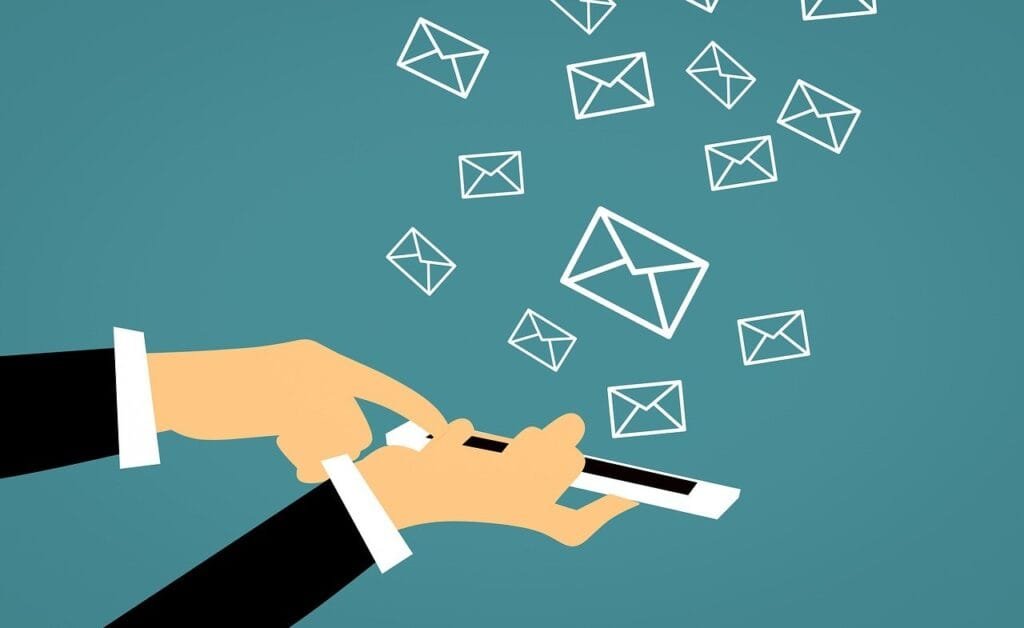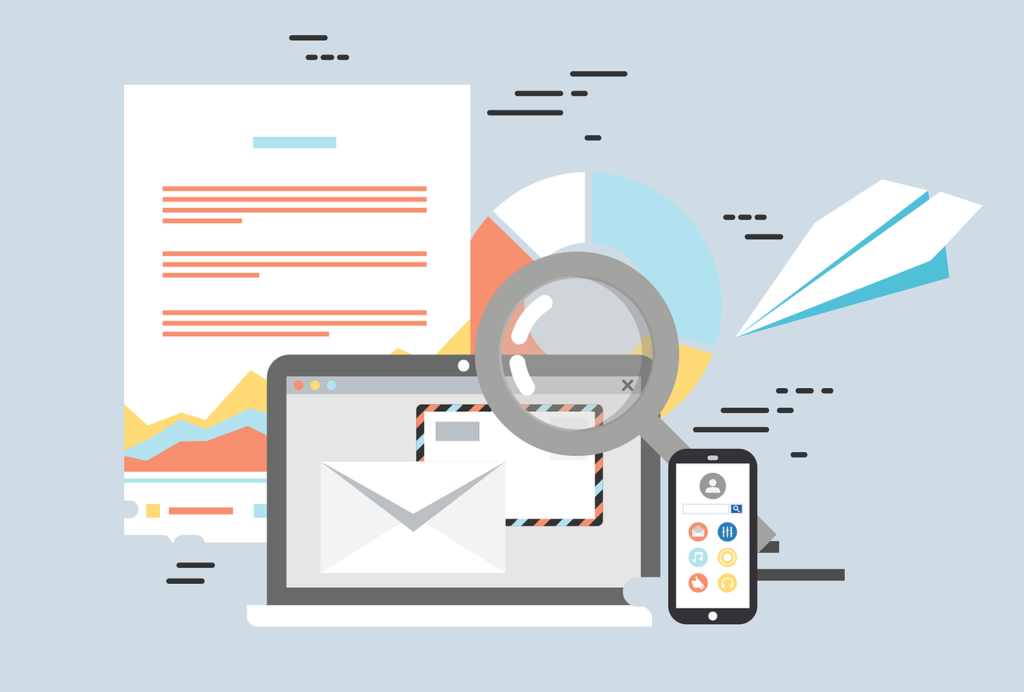This Article has been revised, edited and added to, by Poulomi Chakraborty.
In the digital age, email remains a powerful tool for businesses looking to engage with their audience, nurture relationships, and drive conversions. While social media and other communication channels continue to evolve, email consistently delivers high returns on investment. But the key to reaping these benefits lies in crafting the perfect email. A well-crafted email can do more than just communicate a message; it can position your brand for success by creating lasting impressions and fostering loyalty.
Creating the perfect email involves more than just writing a few lines of text. It’s about understanding your audience, tailoring your message to their needs, and delivering it in a way that resonates with them. From the subject line to the call-to-action, every element of your email plays a crucial role in achieving your marketing goals. This comprehensive guide will walk you through the essential steps to crafting emails that not only capture attention but also drive meaningful engagement.
Understanding Your Audience

Importance of Knowing Your Audience
Before you can craft the perfect email, you need to understand who you’re writing for. Knowing your audience is the foundation of effective email marketing. It allows you to tailor your messages to meet their needs, preferences, and behaviors. When you understand your audience, you can create content that resonates with them, making your emails more engaging and impactful.
Gathering Audience Insights
Start by gathering insights about your audience. Use data from your website analytics, social media platforms, and customer surveys to build a comprehensive picture of who your audience is.
Look at demographic information such as age, gender, location, and income level. Additionally, analyze behavioral data, including purchasing habits, website interactions, and email engagement metrics. This information will help you create detailed buyer personas that represent your ideal customers.
Creating Buyer Personas
Buyer personas are fictional representations of your ideal customers. They help you understand your audience on a deeper level and guide your content creation process. To create a buyer persona, combine the demographic and behavioral data you’ve collected with qualitative insights from customer interviews and feedback.
Each persona should include details such as age, occupation, goals, challenges, and preferred communication channels. For example, a buyer persona for an online fitness store might be a 35-year-old woman who is a busy professional looking to maintain her health through convenient home workouts.
Comparison: Generic Emails vs. Personalized Emails
Let’s compare the impact of generic emails versus personalized emails. Imagine receiving an email that starts with “Dear Customer” and offers a generic discount on all products. This email feels impersonal and may not capture your attention.
Now, consider an email that begins with “Hi [Your Name], we noticed you recently purchased a pair of running shoes. Here are some great deals on running gear that you might like.” The personalized email feels more relevant and shows that the sender understands your preferences. This relevance increases the likelihood of the recipient opening the email, clicking through, and making a purchase.
Segmenting Your Audience
Segmentation involves dividing your email list into smaller groups based on specific criteria. This allows you to send targeted emails that address the unique needs and interests of each segment.
Common segmentation criteria include demographics, purchase history, engagement levels, and geographic location. For example, if you run an online clothing store, you might segment your audience based on gender and send different emails to men and women, highlighting products that are most relevant to each group.
Segmentation not only improves the relevance of your emails but also enhances their effectiveness. Studies show that segmented email campaigns have higher open rates, click-through rates, and conversion rates compared to non-segmented campaigns.
By delivering content that is tailored to the interests and preferences of each segment, you can create a more personalized and engaging experience for your audience.
Example: Segmenting an Email Campaign
Let’s say you operate a travel agency and want to promote a new vacation package. Instead of sending the same email to your entire list, you can segment your audience based on their travel preferences. For example, you can create segments for adventure travelers, family vacationers, and luxury travelers.
Each segment would receive a tailored email highlighting the aspects of the vacation package that are most relevant to them. Adventure travelers might see information about outdoor activities and excursions, while luxury travelers would learn about the premium accommodations and services included in the package.
By understanding your audience and using segmentation to deliver personalized content, you can increase the effectiveness of your email campaigns and position your brand for success.
Crafting Compelling Subject Lines

The Power of First Impressions
The subject line is the first thing your audience sees in their inbox, making it a crucial factor in determining whether your email gets opened or ignored. Crafting compelling subject lines requires a balance between creativity and clarity.
A great subject line grabs attention, sparks curiosity, and encourages the recipient to open the email. It sets the tone for the content inside and can significantly impact your open rates.
Elements of an Effective Subject Line
Effective subject lines are concise and convey a clear benefit or create a sense of urgency. Use actionable language that prompts immediate engagement. For example, instead of saying “Our Latest Newsletter,” you could use “Unlock Exclusive Deals Today.”
Including numbers or statistics can also make your subject line stand out, as it implies valuable and specific content inside. For instance, “5 Tips to Improve Your Marketing Strategy” is likely to catch the reader’s eye.
Personalization can significantly boost the effectiveness of your subject lines. Addressing the recipient by name or referencing their recent activity with your brand can make the email feel more relevant and personal. For example, “John, Don’t Miss Your Special Discount on Running Shoes” is likely to perform better than a generic subject line.
Creating Curiosity and Urgency
Creating a sense of curiosity or urgency in your subject line can encourage recipients to open your email immediately. Phrases like “Last Chance,” “Don’t Miss Out,” or “Exclusive Offer” can prompt action. However, be careful not to overuse urgency tactics, as they can come off as spammy or inauthentic if not used appropriately.
Curiosity can be piqued by posing a question or teasing intriguing content inside the email. For example, “Are You Making These Common Marketing Mistakes?” or “Discover the Secret to Effortless Mornings.” These subject lines invite the reader to find out more by opening the email.
A/B Testing Subject Lines
A/B testing, also known as split testing, is a method to determine which subject lines are most effective. By creating two versions of an email with different subject lines and sending them to small segments of your audience, you can analyze which version performs better in terms of open rates.
Once you identify the more successful subject line, you can use it for the rest of your audience. This data-driven approach allows you to continuously refine your subject lines and improve your campaign performance.
Example: Subject Line A/B Testing
Consider an online bookstore promoting a sale. You might test two subject lines: “Get 20% Off All Books This Weekend” versus “Hurry! 20% Off Your Favorite Books Ends Soon.”
By sending each subject line to a small segment of your email list, you can track which one results in higher open rates. The winning subject line can then be used for the rest of your campaign, ensuring maximum engagement.
Avoiding Spam Triggers
To ensure your emails land in the inbox and not the spam folder, avoid using certain words and phrases that can trigger spam filters. Words like “free,” “buy now,” and “limited time offer” are often flagged by email providers.
Additionally, excessive punctuation, all caps, and misleading subject lines can also result in your email being marked as spam. Focus on crafting subject lines that are honest, clear, and enticing without resorting to tactics that could jeopardize your deliverability.
Crafting Subject Lines for Mobile
With a significant portion of emails being opened on mobile devices, it’s important to optimize your subject lines for smaller screens. Mobile devices often display fewer characters, so aim for subject lines that are 30-40 characters long. Ensure that the most important part of your message is at the beginning of the subject line, so it’s visible even if the rest gets cut off.
Real-World Application: Boosting Open Rates
Let’s look at a real-world application of these principles. A fashion retailer looking to boost its open rates can craft a subject line that combines urgency and personalization.
For example, “Mary, Don’t Miss Our Flash Sale – 50% Off Ends Tonight!” This subject line addresses the recipient by name, creates a sense of urgency, and clearly states the benefit. By testing different variations and analyzing the results, the retailer can refine their approach and improve their email open rates.
Crafting compelling subject lines is both an art and a science. By understanding your audience, using actionable language, and continuously testing and refining your approach, you can create subject lines that capture attention and drive engagement.
Creating Engaging Email Content

The Importance of a Strong Opening
Once your subject line has successfully encouraged the recipient to open your email, the next critical element is the opening line. A strong opening sets the tone for the rest of the email and can determine whether the reader continues reading or closes the email.
Start with a compelling introduction that directly addresses the recipient’s needs or interests. This could be a personalized greeting, a provocative question, or a statement that highlights the benefit of reading further. The goal is to create an immediate connection and entice the reader to continue.
Writing Clear and Concise Content
Engaging email content should be clear, concise, and focused. Avoid lengthy paragraphs and dense text. Instead, use short sentences and break up the content into easily digestible sections. This makes your email more readable, especially on mobile devices. Get to the point quickly and ensure that each section of your email serves a purpose, whether it’s to inform, entertain, or persuade.
Consider the following example: an online fitness store sending an email about a new product launch. The opening line could be, “Hey [Name], are you ready to take your workouts to the next level?”
This immediately engages the reader and sets the stage for the rest of the email. The content should then be broken into sections, highlighting the key features of the product, customer testimonials, and a clear call-to-action.
Personalization and Relevance
Just as with subject lines, personalizing the content of your email can greatly enhance engagement. Use dynamic content to tailor the message to each recipient based on their preferences, behavior, or demographic information.
This could include recommending products based on past purchases, addressing the recipient by name, or providing content relevant to their location.
For example, a travel agency could send an email to subscribers who have shown interest in beach vacations. The email could include personalized travel recommendations, tips for beach destinations, and special offers on beach vacation packages. By making the content relevant to the recipient’s interests, the agency increases the likelihood of engagement and conversions.
Visual Appeal and Design
The visual appeal of your email plays a crucial role in engagement. A clean, professional design with a good balance of text and images can make your email more attractive and easier to read.
Use high-quality images that are relevant to your content and brand. Make sure your email is mobile-friendly, as a significant portion of your audience is likely to open emails on their smartphones. Responsive design ensures that your email looks great on any device, improving the user experience and engagement.
Call-to-Action (CTA)
Every email should have a clear and compelling call-to-action. The CTA is the action you want the recipient to take after reading your email, such as making a purchase, signing up for a webinar, or downloading a resource.
Make your CTA stand out by using a button or a different color. Use persuasive language that creates a sense of urgency or highlights the benefit of taking action, such as “Get Your Discount Now” or “Join the Webinar Today.”
Consider the fitness store example again. After introducing the new product and highlighting its features, the email should include a strong CTA like “Shop Now” or “Get Yours Today.” This directs the reader to the next step and makes it easy for them to take action.
Testing and Optimization
Continuous testing and optimization are essential for maximizing the effectiveness of your email content. Experiment with different content formats, lengths, and tones to see what resonates best with your audience.
Analyze metrics such as open rates, click-through rates, and conversion rates to determine what works and what doesn’t. Use these insights to refine your content strategy and improve future email campaigns.
A/B testing can also be applied to different elements of your email content. Test different headlines, images, CTAs, and even the length of your emails. For example, you might find that shorter emails with concise information perform better than longer, more detailed ones. By continuously testing and optimizing, you can create email content that engages your audience and drives desired actions.
Real-World Application: Boosting Engagement with Personalization
To illustrate the impact of personalized content, consider an e-commerce business specializing in skincare products. They can send personalized emails based on customer purchase history and preferences.
For a customer who recently bought a moisturizer, the email could recommend complementary products like cleansers or serums. The email could start with, “Hi [Name], we hope you’re loving your new moisturizer! Here are some products that can enhance your skincare routine.”
The email should include high-quality images of the recommended products, brief descriptions, and a strong CTA like “Discover Now.” By making the content highly relevant and visually appealing, the business can significantly increase engagement and drive more sales.
Creating engaging email content is about understanding your audience, delivering value, and continuously optimizing your approach. By focusing on clarity, personalization, visual appeal, and strong CTAs, you can craft emails that captivate your audience and drive meaningful engagement.

Timing and Frequency of Emails
Finding the Optimal Send Time
The timing of your email can significantly impact its success. Sending your email at the right time ensures that it reaches your audience when they are most likely to engage. The optimal send time can vary based on your target audience and industry.
Analyzing past campaign data can provide insights into when your audience is most active. For example, if your emails have higher open rates in the morning, it may be beneficial to schedule future emails during those hours.
Consider the habits and time zones of your audience. If you are targeting a global audience, segmenting your list by time zone and scheduling emails to arrive at the optimal time for each segment can improve engagement rates.
Tools like Google Analytics and your email marketing platform’s built-in analytics can help identify the best times to send your emails.
Understanding Your Audience’s Behavior
To determine the best time to send your emails, it’s important to understand your audience’s behavior. Are they checking their emails first thing in the morning, during lunch breaks, or in the evening? Conducting surveys and analyzing engagement data can provide valuable insights into their routines.
For instance, if your target audience consists mainly of professionals, sending emails during work hours might yield better results. On the other hand, if your audience is more diverse, testing different send times and analyzing the results can help identify patterns.
Balancing Frequency
The frequency of your emails is just as important as the timing. Too many emails can overwhelm your audience and lead to higher unsubscribe rates. Conversely, too few emails can result in your audience forgetting about your brand.
Finding the right balance requires understanding your audience’s preferences and behavior. Regularly monitor engagement metrics such as open rates, click-through rates, and unsubscribe rates to determine the ideal frequency for your campaigns.
A common approach is to start with a moderate frequency and adjust based on audience feedback and engagement data. For example, you might start with one email per week and then increase or decrease the frequency based on the response.
Listening to your audience and being responsive to their preferences can help you maintain a healthy email list and maximize engagement.
Seasonal and Event-Based Timing
In addition to regular email campaigns, consider incorporating seasonal and event-based timing into your strategy. Holidays, sales events, and industry-specific occasions can provide opportunities to send timely and relevant emails.
For instance, a retailer might send promotional emails leading up to Black Friday or a travel agency might send emails highlighting summer vacation packages as the season approaches.
Event-based emails can also include reminders for webinars, product launches, or company events. These emails should be scheduled to give recipients enough notice to take action. For example, sending a reminder email a week before a webinar and another one the day before can help increase attendance rates.
Testing Different Frequencies
A/B testing can be useful in determining the best frequency for your emails. Test different sending frequencies with small segments of your audience to see which schedule yields the highest engagement.
For example, you might test sending emails weekly versus bi-weekly and compare the results. Use the insights from these tests to adjust your email schedule and optimize engagement.
Consider running a test where one segment of your audience receives weekly emails and another segment receives bi-weekly emails. Analyze metrics such as open rates, click-through rates, and conversion rates to determine which frequency performs better. This data-driven approach allows you to refine your strategy based on real audience feedback.
Real-World Application: Optimizing Send Times and Frequency
To illustrate the impact of optimizing send times and frequency, consider an online fashion retailer. By analyzing past email campaign data, they discover that their audience is most active in the evenings.
They decide to schedule their promotional emails to be sent at 7 PM, resulting in higher open rates and increased website traffic. Additionally, they find that sending two emails per week—one on Tuesday and one on Friday—maintains high engagement without overwhelming their subscribers.
The retailer also incorporates seasonal timing into their strategy. Leading up to the holiday season, they send a series of emails highlighting gift ideas and special promotions.
These emails are strategically timed to arrive in recipients’ inboxes when they are most likely to be planning their holiday shopping. By carefully planning the timing and frequency of their emails, the retailer can maximize engagement and drive more sales.
Timing and frequency are critical components of a successful email marketing strategy. By understanding your audience’s behavior, balancing frequency, and testing different schedules, you can optimize your email campaigns to achieve the best results.
Leveraging Automation for Efficiency and Engagement

The Benefits of Email Automation
Email automation can significantly enhance the efficiency and effectiveness of your email marketing campaigns. By automating repetitive tasks, you can save time and ensure that your emails are sent at the optimal time for each recipient.
Automation also allows you to create more personalized and timely messages, which can improve engagement and conversions. For startup founders, leveraging automation is a strategic way to scale marketing efforts without overwhelming your team.
Setting Up Automated Workflows
Automated workflows are sequences of emails that are triggered by specific actions or conditions. Common automated workflows include welcome emails, abandoned cart reminders, post-purchase follow-ups, and re-engagement campaigns. Setting up these workflows involves defining the triggers, creating the email content, and scheduling the timing for each email in the sequence.
For example, a welcome email workflow might include a series of emails that introduce new subscribers to your brand. The first email could thank them for subscribing and provide a special offer, the second email could share your brand’s story, and the third email could highlight your most popular products.
By automating this sequence, you ensure that new subscribers receive a consistent and engaging introduction to your brand without requiring manual effort.
Welcome Emails
Welcome emails are the first communication new subscribers receive from your brand. They set the tone for your relationship and provide an opportunity to make a positive first impression.
An effective welcome email should introduce your brand, highlight the benefits of subscribing, and encourage further engagement, such as following your social media accounts or exploring your website.
Consider a software company that offers a free trial of its product. When a new user signs up for the trial, they receive a welcome email that includes a brief overview of the product, links to helpful resources, and a special discount if they decide to purchase the full version.
This email not only welcomes the new user but also provides valuable information and incentives to encourage further engagement.
Abandoned Cart Reminders
Abandoned cart emails remind customers who have left items in their shopping cart to complete their purchase. These emails are highly effective because they target users who have already shown intent to buy.
Including personalized product recommendations, offering discounts, or creating a sense of urgency can increase the likelihood of converting these potential sales.
For instance, an e-commerce store could set up an abandoned cart workflow that triggers an email 24 hours after a customer leaves items in their cart. The email could include a friendly reminder, images of the abandoned products, and a limited-time discount code to incentivize the purchase.
By automating this process, the store can recover lost sales without manual intervention.
Post-Purchase Follow-Ups
Post-purchase emails are sent after a customer has made a purchase. These emails can thank the customer for their purchase, provide order details, and suggest complementary products. Follow-up emails can also include requests for reviews or feedback, which can help build trust and improve future customer experiences.
A beauty brand, for example, might send a post-purchase email thanking the customer for their order and providing tips on how to use the purchased products. A week later, a follow-up email could suggest complementary products and invite the customer to leave a review.
By maintaining communication after the sale, the brand can foster loyalty and encourage repeat business.
Re-Engagement Emails
Re-engagement emails target inactive subscribers who haven’t interacted with your emails in a while. These emails can offer special incentives, highlight new products or content, and ask for feedback to understand why the recipient has become disengaged. Re-engagement campaigns can help you maintain a healthy and active email list.
For example, a subscription box service could send a re-engagement email to subscribers who haven’t opened their emails in the past three months. The email could offer a special discount on their next box and highlight exciting new products that have been added to the service. By re-engaging inactive subscribers, the service can rekindle interest and retain customers.
Testing and Optimizing Automated Workflows
Continuous testing and optimization are crucial for maximizing the effectiveness of your automated workflows. Experiment with different triggers, email content, and timing to see what resonates best with your audience.
Analyze metrics such as open rates, click-through rates, and conversion rates to determine what works and what doesn’t. Use these insights to refine your workflows and improve future email campaigns.
A/B testing can also be applied to automated emails. For example, you could test different subject lines for your welcome emails or compare the effectiveness of different incentives in your abandoned cart reminders. By continuously testing and optimizing, you can create automated workflows that deliver the best results.
Real-World Application: Scaling with Automation
To illustrate the impact of email automation, consider a fitness subscription service that offers workout plans and nutritional guidance. By setting up automated workflows, the service can nurture leads and retain customers with minimal manual effort.
New subscribers receive a series of welcome emails introducing them to the service and providing tips for getting started. Customers who abandon their cart receive reminders with personalized product recommendations and discount offers.
Post-purchase emails thank customers for their orders and suggest additional products to enhance their fitness journey.
By leveraging automation, the fitness subscription service can ensure consistent and timely communication with its audience, improve engagement, and drive more sales. The time saved through automation can be redirected towards other strategic initiatives, allowing the business to scale more efficiently.
Email automation is a powerful tool for enhancing efficiency and engagement in your marketing campaigns. By setting up automated workflows, continuously testing and optimizing, and leveraging the benefits of personalization and timely communication, you can create a seamless and impactful email marketing strategy.
Designing Visually Appealing Emails

The Role of Visuals in Email Marketing
Visual appeal is a crucial component of effective email marketing. A well-designed email can capture attention, convey your message more effectively, and create a positive impression of your brand. Visuals can include images, graphics, colors, fonts, and overall layout. When used correctly, these elements can enhance readability, highlight key information, and encourage engagement.
Creating a Clean and Professional Design
A clean and professional design is essential for making your emails look polished and credible. Start with a simple, uncluttered layout that guides the reader’s eye through the content.
Use white space strategically to separate different sections and make the email easier to read. Choose a color scheme that aligns with your brand identity and use it consistently throughout your emails.
For example, a tech company might use a minimalist design with a lot of white space, a limited color palette of blue and white, and modern fonts. This clean design can convey professionalism and trustworthiness, which are important attributes for a tech brand.
Using High-Quality Images and Graphics
Images and graphics can make your emails more engaging and visually appealing. Use high-quality images that are relevant to your content and reflect your brand’s style. Avoid using stock photos that look generic or overly staged. Instead, opt for original images or professionally designed graphics that enhance your message.
For instance, a travel agency promoting vacation packages could use stunning photos of destinations to capture the reader’s imagination. Each image should be accompanied by a brief description and a call-to-action that encourages the reader to learn more about the package.
Optimizing for Mobile Devices
With a significant portion of emails being opened on mobile devices, it’s crucial to ensure that your emails are mobile-friendly. Use a responsive design that adapts to different screen sizes and orientations. This ensures that your emails look great and are easy to navigate on smartphones and tablets.
To optimize for mobile, use larger fonts that are easy to read on small screens, and make sure buttons and links are big enough to be tapped easily. Keep your content concise and prioritize the most important information at the top of the email, as mobile users are likely to skim through the content quickly.
Incorporating Interactive Elements
Interactive elements can make your emails more engaging and encourage recipients to take action. These elements can include clickable buttons, image carousels, polls, and quizzes. Interactive content not only grabs attention but also provides a more immersive experience for the reader.
For example, an e-commerce store could include a product carousel in their emails, allowing recipients to browse through different items without leaving the email. This interactive feature can enhance the shopping experience and increase the likelihood of conversions.
Ensuring Accessibility
Accessibility is an important consideration when designing emails. Make sure your emails are accessible to all recipients, including those with disabilities. Use alt text for images so that screen readers can describe them to visually impaired users. Ensure that your color contrast is sufficient for readability and avoid using color as the sole means of conveying information.
For instance, if you’re using colored buttons for calls-to-action, make sure the text on the buttons is also clear and readable. This way, users with color vision deficiencies can still understand and interact with your content.
Testing and Refining Your Design
Testing is a crucial step in the email design process. Send test emails to yourself and your team to check how they look on different devices and email clients. Pay attention to how the layout, images, and text appear on both desktop and mobile devices. Use the insights from these tests to make any necessary adjustments and ensure a consistent experience across all platforms.
A/B testing can also be applied to design elements. For example, you could test different color schemes, image placements, or button styles to see which versions perform better. By continuously testing and refining your design, you can create visually appealing emails that drive engagement and achieve your marketing goals.
Real-World Application: Engaging Emails with Visual Appeal
Consider an online clothing retailer looking to promote a new collection. They create an email with a clean design, featuring high-quality images of the new clothing items. The email is optimized for mobile, ensuring that the images and text look great on all devices.
Interactive elements, such as a product carousel and clickable buttons, allow recipients to browse and shop directly from the email. Alt text is used for all images to ensure accessibility, and the color scheme aligns with the brand’s identity.
By focusing on visual appeal and ensuring accessibility, the retailer can create an engaging email that captures attention and encourages recipients to explore the new collection. The use of high-quality images and interactive elements enhances the shopping experience, increasing the likelihood of conversions.
Designing visually appealing emails is about more than just making them look good. It’s about creating a positive experience for your audience, enhancing the readability and effectiveness of your content, and driving engagement.
By focusing on clean design, high-quality visuals, mobile optimization, interactivity, and accessibility, you can craft emails that stand out and achieve your marketing objectives.
Conclusion
Crafting the perfect email is an art that combines understanding your audience, creating compelling content, and leveraging strategic design and timing. Knowing who you’re writing for and tailoring your message to their needs is crucial. From eye-catching subject lines to engaging content and clear calls-to-action, every element must work together to capture attention and drive action. Automation and segmentation enhance personalization and efficiency, ensuring your emails reach the right people at the right time. Visual appeal and accessibility are key to making a strong impression and maintaining engagement across devices.
By focusing on these elements, you can create emails that not only communicate effectively but also strengthen your brand’s presence and foster lasting relationships with your audience. Continuously testing and refining your strategies will help you stay ahead in the ever-evolving landscape of email marketing. The perfect email positions your brand for success by delivering value and building trust, one message at a time.
Read Next





















